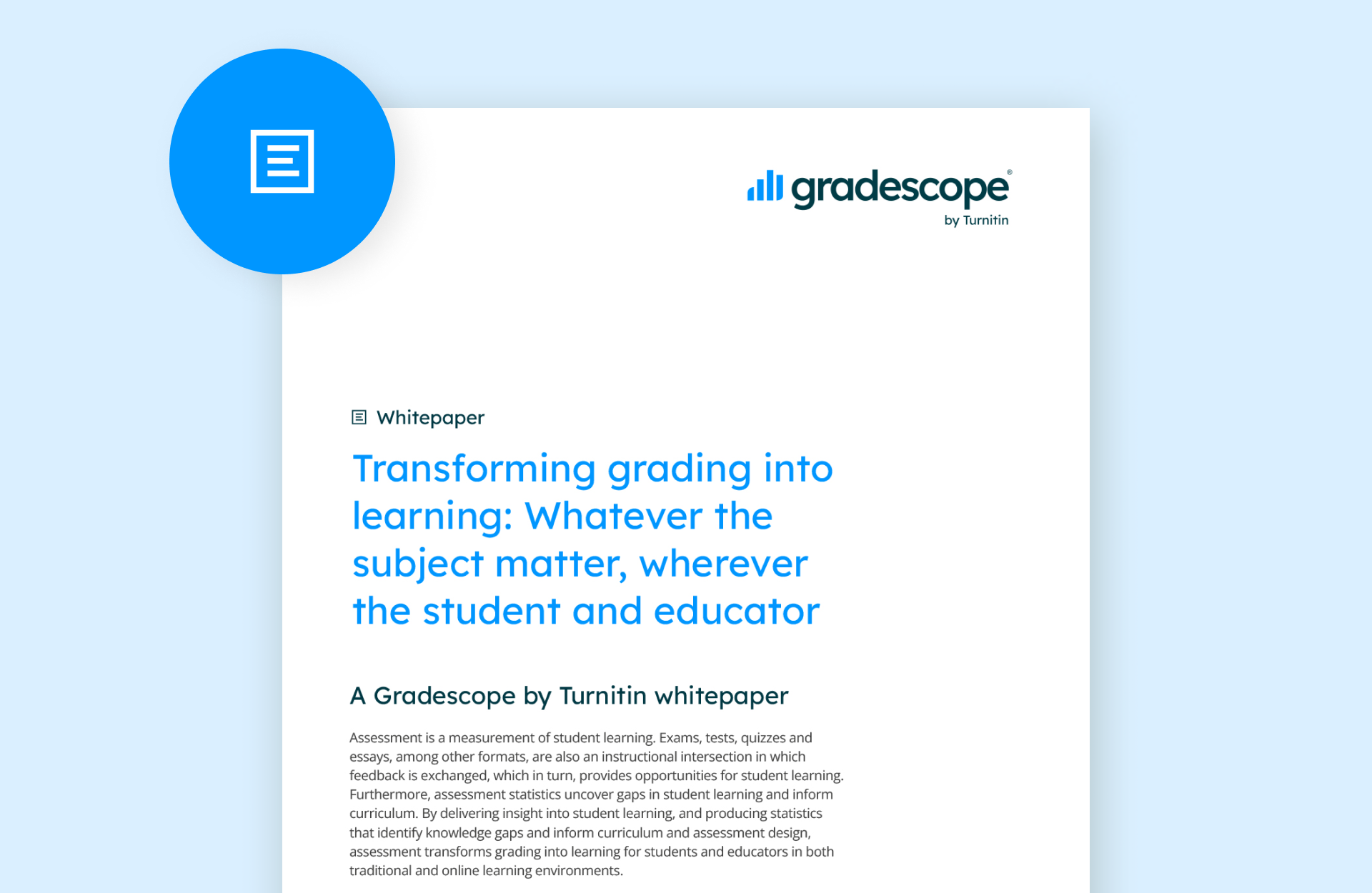At Gradescope by Turnitin, our priority has always been to help instructors get the most out of every assessment, whether that takes the form of increased efficiency, accessible exam data, or ways to enable feedback loops, for starters.
Our founders were instructors themselves who, after a large marathon grading session said, “There has got to be a better way!” before creating Gradescope.
To that end, Gradescope’s functions support pedagogy at its most ideal. Over the years, we’ve discussed best practices in grading and assessment, addressing efficiency and item analysis before the pandemic as well as supporting remote assessment during the pivot to emergency remote learning.
We know that best practices feel like ivory-tower notions—they’ re true and yet feel impossible to implement; frequent formative assessments are touted as a key factor in fostering student learning, but how to do that AND teach? Item analysis is an important way to promote exam quality, but in a large lecture course, who is going to crunch that data? Personalized feedback is crucial to supporting the student learning journey, but who has that time? Rubrics are a critical component of fair assessment, but managing them with a team of human graders with unintended biases is a lofty task.
Gradescope by Turnitin considers these best practices and brings them within range for instructors to execute. Our software addresses practical matters, bridging pedagogy with on-the-ground assessment.
The best practices serve as our beacon. As such, we bring you a whitepaper entitled, “Transforming grading into learning,” which discusses assessment as a data-filled intersection with great potential for learning. This intersection can inform teachers about teaching efficacy and assessment design. In turn, students have the opportunity to glean information about what they need to understand as they move forward. Grading can be learning, for both students and teachers.




